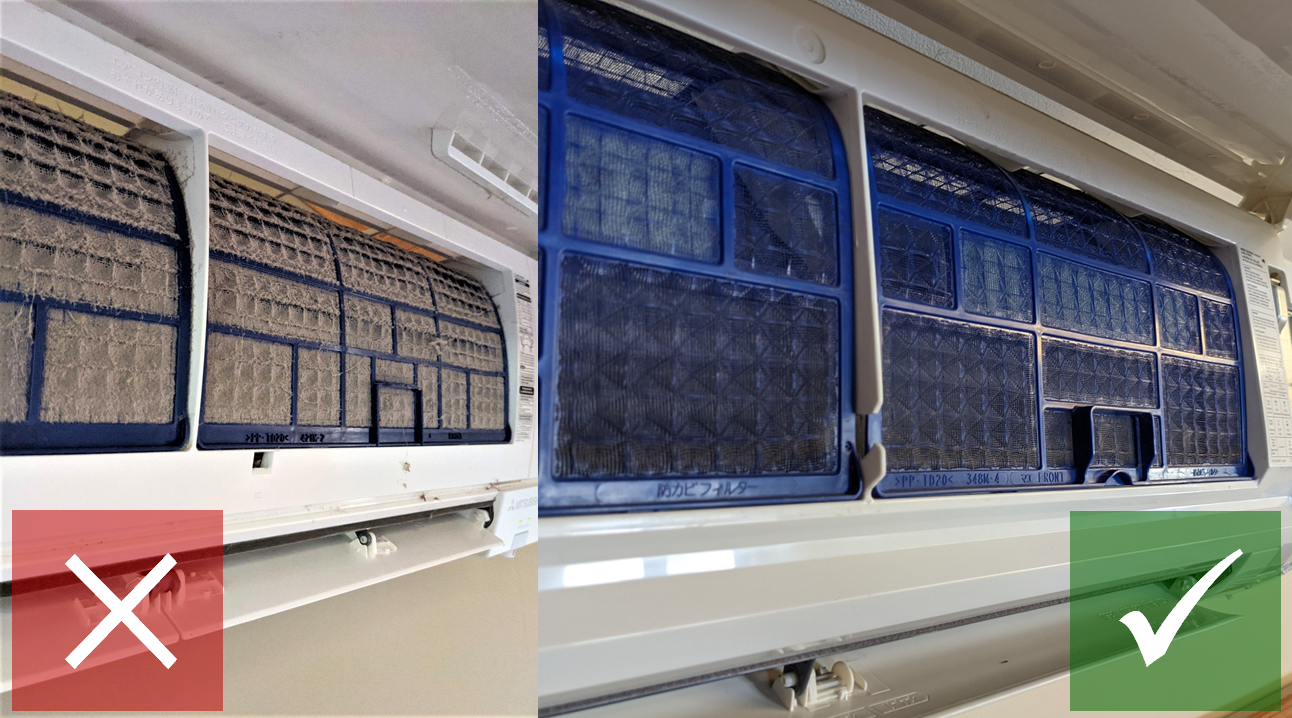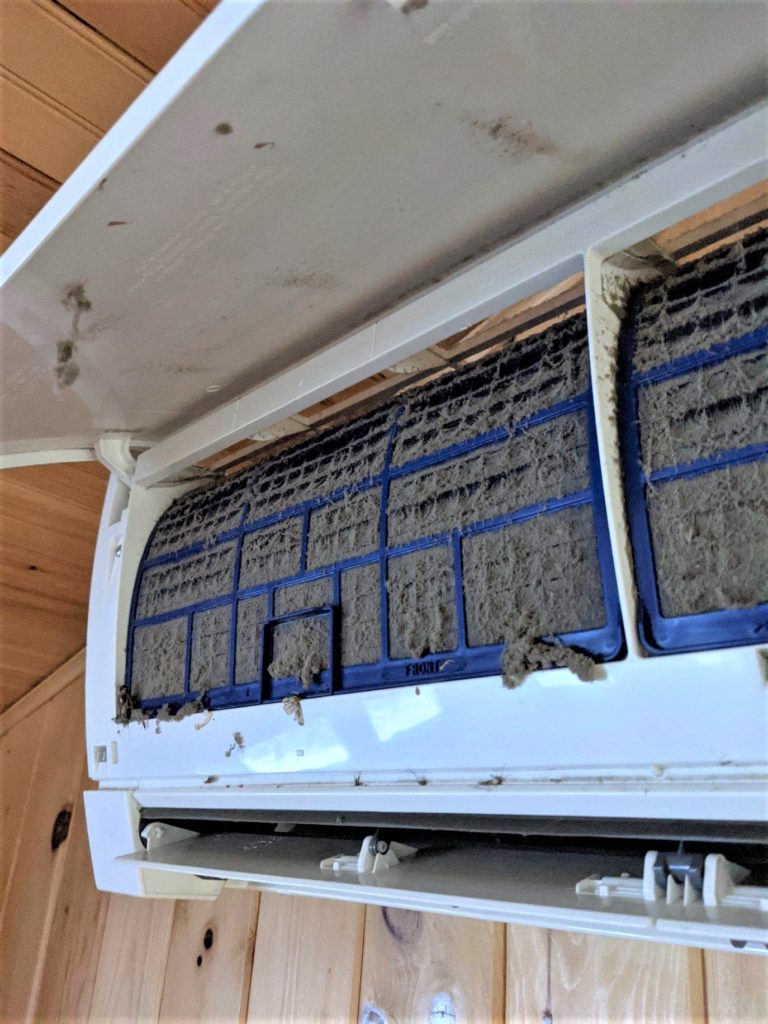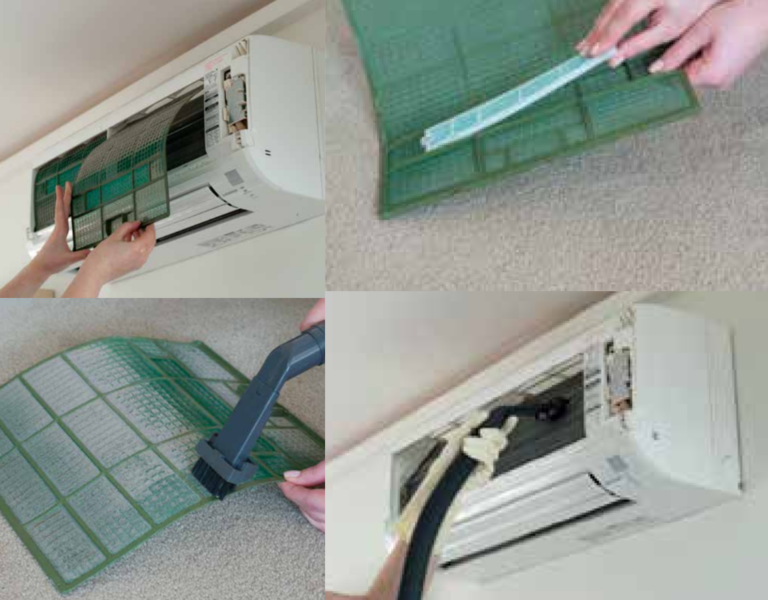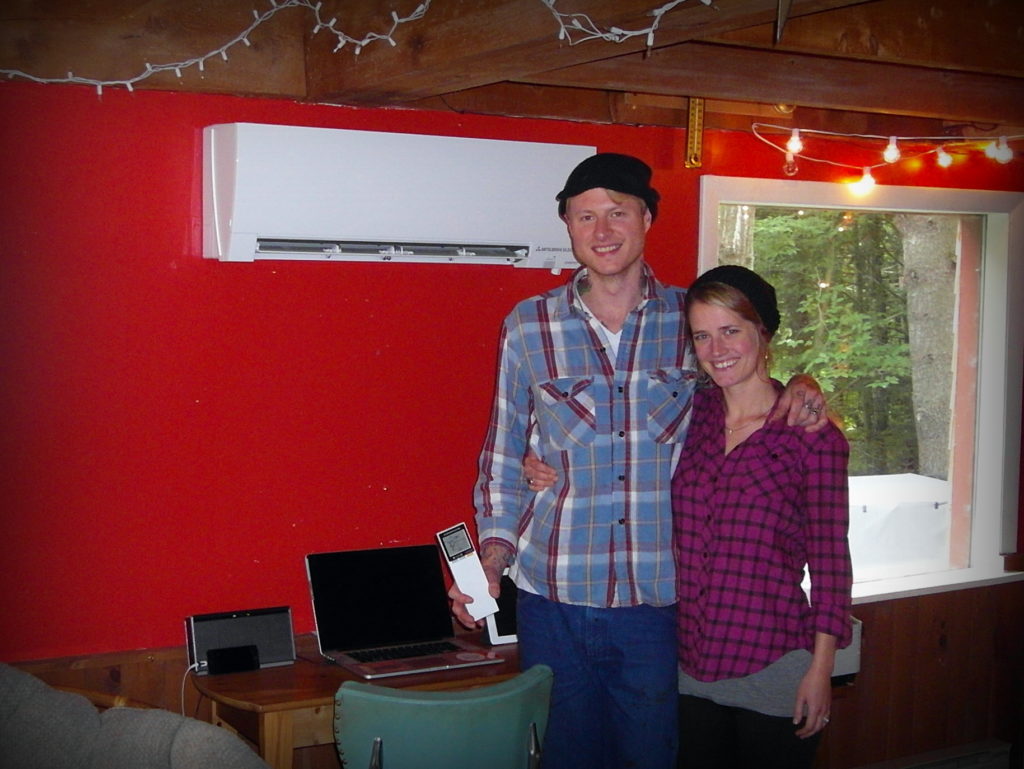

Why do heat pumps need to be cleaned? How do you clean heat pumps? Our customers have been asking, and we have answers! Read on to learn best practices for cleaning heat pumps.
Why do heat pumps need to be cleaned?

Inspecting and cleaning your heat pump will prolong the life of your unit and ensure that it will continue to work smoothly and efficiently. To maintain optimal comfort, drive energy efficiency, and protect your HVAC investment, Mitsubishi recommends you clean your filters regularly, especially between seasons.
The simple act of cleaning your filters will make a big difference to the quality of the indoor air you breathe by removing any accumulated dirt and allergens that build up over time. Cleaning often – rather than waiting until the filters are filled with dust and pollen – is always the best option.
How do you clean heat pumps?
What You Will Need: vacuum cleaner & gloves
Tip #1: Please refer to your unit’s operating manual for specific recommended cleaning instructions.
Cleaning the Air Filters
Safety first! Turn off your heat pump unit before cleaning. Push in the notches on either side of the unit and lift the front panel until a click is heard. With the front panel open, the air filters can be lifted up and pulled out of the unit for cleaning.
Mitsubishi recommends that you clean the air filters (the larger of the two filters) regularly and at least with every seasonal change. Unclip or take off the air cleaning filter (the smaller of the two filters) and place to the side for now. Remove any dirt buildup on the air filters by using the brush attachment on your vacuum cleaner, or rinse with lukewarm water. To dry, use a soft dry cloth or place in the shade.

Next, clean the air cleaning filter (the smaller filter) that was set aside earlier. These should be cleaned every 3-4 months and replaced once a year for best performance. As with the larger air filters, simply remove dirt using the brush attachment on your vacuum cleaner. When dirt cannot be removed by vacuum cleaning, soak the filter and its frame in lukewarm water before gently washing and rinsing it. Diluted mild detergents can be used. After washing, dry the filter well in a shaded spot or with a soft dry cloth. Click the air cleaning filter back into place on the air filter.
Cleaning the Heat Exchanger
Tip #2: If the heat pump has been cooling, the unit may be wet from condensation. This will make it difficult to vacuum. For best results, attempt to clean only after the unit has been off for at least 5 hours. Also, do not touch the heat exchanger with your bare hands. It is best to wear a pair of gloves to avoid injury.
With the air filters removed, you can see the heat exchanger, which will look like a bunch of thin plates lined up vertically (called fins). If the heat exchanger is very dirty, you may need to schedule a professional cleaning.
Otherwise, you can use the brush attachment on your vacuum to clean the heat exchanger vertically, gently moving the brush up and down the heat exchanger. Please note the heat exchanger may be damaged if it is cleaned horizontally.
After everything is cleaned and the air filters have dried, the filters can be placed back into the unit by sliding them along the unit’s tracks and clicking the tabs on the bottom into place. Close the front panel of the unit and click it back into place as well.
Tip # 3: Do not use benzene, thinner, polishing powder, or insecticide. Do not expose parts to direct sunlight, heat, or fire.
Inspecting the Outdoor Unit and Lines
Don’t forget to inspect your outdoor units too! Keep the outdoor unit clear of snow, ice, debris, and vegetation. Be on the lookout for rodents or insects in and around the unit, especially between seasons. Listen for smooth fan operation – it should not be rattling or hitting something. Make sure there is a place for water to drain out of the unit from the middle, particularly in the winter.
It is never a bad idea to take a closer look at the lines as well. Check for cracked or broken pieces or missing insulation.
Closing Thoughts
For more information, watch this video: Mitsubishi Homeowner Help: Filter Cleaning
If you have a balanced ventilation system like an HRV or ERV, you may want to look into cleaning or replacing those filters too, especially before winter.
Be sure to check out our heat pump management tips for cold weather.
Reach out to us if you are interested in heat pump installation for your home.
